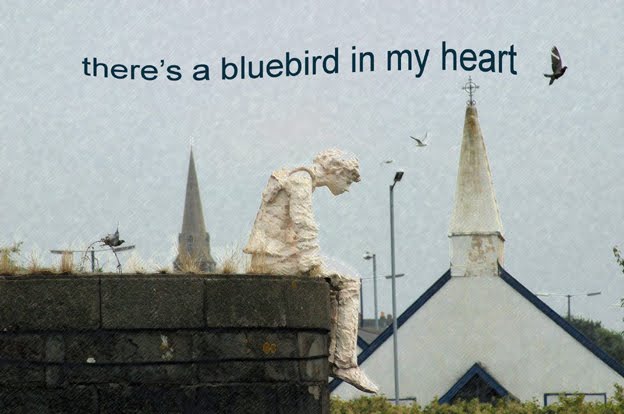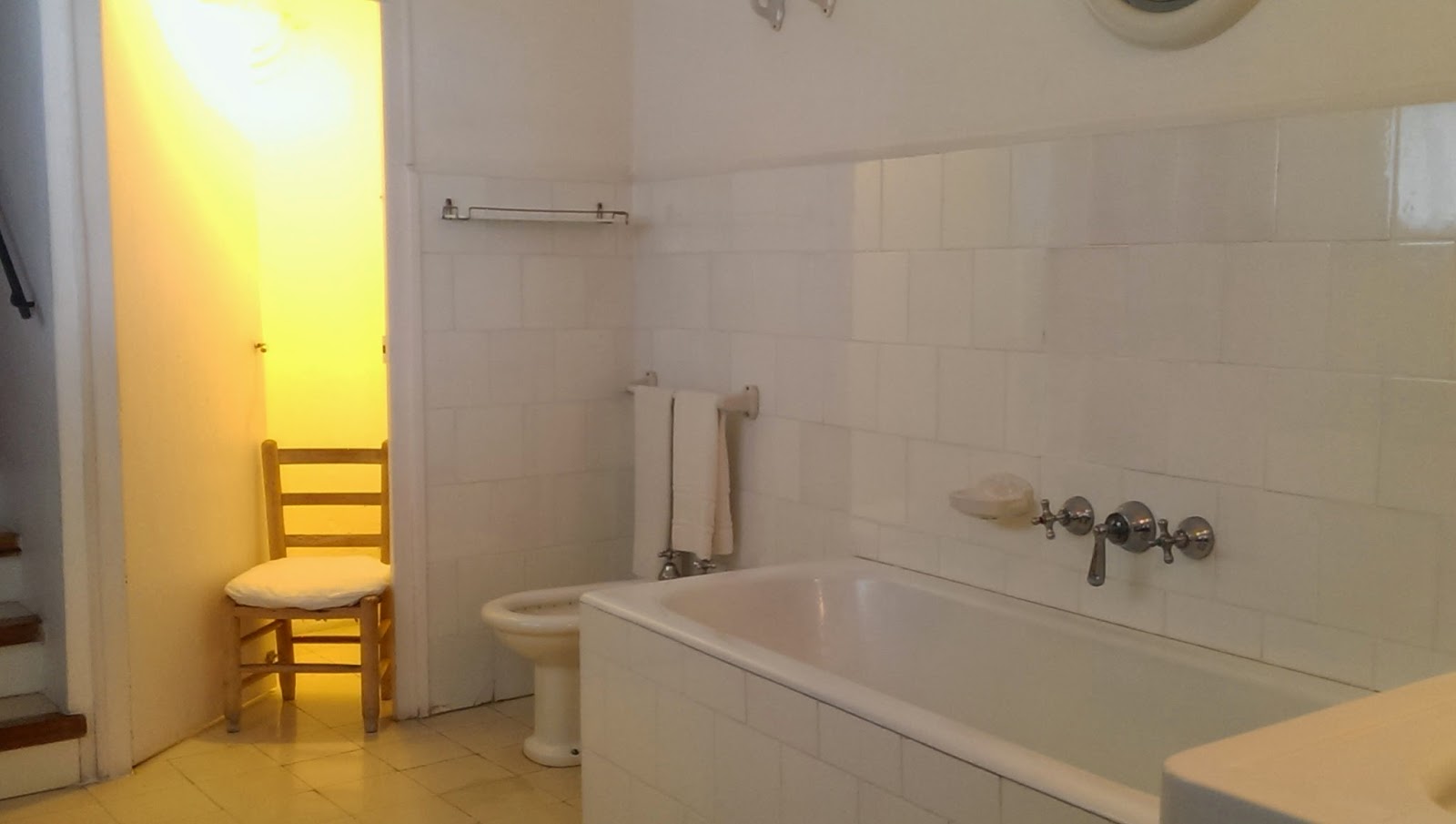The
Tree that went for a Walk.
by
Zachary Twoshoes
Her
name is 'Summer', perhaps because she was born on mid-summer's day,
exactly five years
ago from today. Summer has curly fair hair, the sort that ties itself
into ringlets, and she likes
to wear dungarees and a summer hat when she plays in the garden.
At
the bottom of the garden there's a beautiful beech tree. It has
wonderful branches that reach
right down to the ground. The branches have arranged themselves
almost as steps,
spiralling
around the tree. Summer can climb to near the top of the tree, and
doesn't ever feel frightened.
I
shall call you 'Emily' says Summer, with her arms around one of the
beech tree's highest branches,
and rests her cheek against its smooth bark. She can hear the sound
of leaves rustling,
answering her, and it's a friendly sound.
And
mixed with this sound, Summer hears her mother calling. 'It's
teatime' her mother says, and
Summer slips down quietly from her hideaway in the Beech tree, runs
across the garden and
into the house. There are crumpets, with butter and raspberry jam,
and Summers' Mum
has
spread the jam into heart shapes in the middle of each crumpet. They
eat them, sitting together
at the table and looking into the garden.
The
next day is a Sunday, and straightaway after breakfast Summer heads
toward the beech tree.
She climbs up to her safe place in Emily, and now it's as if there's
a cradle there for her, in
the branches, and she settles into the safety of them, and whispers
to Emily. 'Sometimes
I feel sad', she whispers, 'because my friend, Crystal, had to leave,
and I don't know
why, and I don't know where she's gone'.
And
this time, when Summer listens to Emily's leaves rustling, she thinks
that she can hear words
in the wind, and Emily's saying, 'Tell me, so that I can help you'. So
Summer tells the tree everything, about how Crystal left, about how
she misses her, that she
doesn't have such fun without her.
And
Emily's leaves rustle, and the sounds that they make speak to Summer,
and she hears Emily
say, 'I can help you. I can take you to Crystal, to show her to you,
so that you don't have to
feel sad any more, because you'll know that she is happy'.
And
Summer trusts Emily, and asks her to take her to Crystal, so that
they can see that she is happy.
Emily
cradles Summer in her branches, and rocks her until she's asleep, and
then, very slowly,
Emily starts to walk.
It's
unusual for a tree to be able to walk, even in dreams, but Emily is
an unusual tree, and she
moves with the slow slide of a snail, which is so gentle that it
doesn't wake Summer, as
she
sleeps in the cradle of the branches.
Emily crosses
the road, to ask the Chestnut Tree where they can find Crystal.
The
Chestnut Tree gives Emily careful directions, and some roast
chestnuts. 'Summer might like to nibble these later', thinks Emily, as she slides silently through the night, following the Chestnut's
directions to the park by the Blackberry
Brambles.
Summer
awakes in the middle of her dreams, and, after she's had the chestnuts
for
breakfast, she plays in the park, staying close to Emily, so that
she's sure she won't get lost.
And
now a man with legs that seem as long as hedges is walking in the
park, and Emily and Summer
watch as he sits carefully on the bench by the pond. He opens his
bag, and arranges a
piece of pumpkin pie, a potato salad, and a jar of pickles on his
knees, on a red and white striped
handkerchief. His legs are so long that his picnic is at just the
right height, as if he's sitting
at a table.
And now his
phone rings, and as he pats his pockets, looking for it, his hat
falls off his head. It's dark brown,
with a rim like a wheel, and it rolls along the path, toward the pond
in the middle of the park.
Summer
can see that the man doesn't know what to do, now that his picnic is
so perfectly arranged
on his knees, and his hat is rolling towards the pond. She nudges
Emily, and Emily waves
her branches carefully, and makes a breeze blow, and the breeze
catches the hat, and
picks
it up, and makes it sail back through the air, until it lands,
gently, back on the head of the man
with legs that seem as long as hedges.
He
looks surprised, and Emily and Summer can hear him talking into the
phone, telling the tale
about how his hat fell off, and a breeze caught it, and blew it back
onto his head.
Summer
smiles, she's thrilled by Emily's magic.
And
now Emily is whispering to an Ash Tree that is by their side in the
park. Summer can hear the rustle
of their leaves. The Ash Tree gives Emily a key, and tells her how to
find a Lime Tree
that
lives in the curve of the hill, next to the Whispering Wood.
And,
after thanking the Ash Tree, Emily and Summer set off, to find the
Lime Tree.
And
when they arrive Emily gives the Lime Tree the key that the Ash Tree
has given her, and
the
Lime Tree gives Summer a leaf, the shape of a heart.
'This
is where we'll be able to see Crystal', says Emily to Summer,
wrapping Summer tightly it
her
branches so that she won't feel frightened.
Summer
looks through the branches, and through a dreamy window in a little
redbrick house
she
can see Crystal playing in her bedroom.
Summer
lets go of the heart shaped leaf, and it floats slowly downward.
Emily waves her
branches,
softly, and the breeze from the branches catches the leaf, carrying
it through the
open
window toward Crystal.
Crystal
reaches out, and gently takes hold of the leaf, and holds it close to
her heart, and
looks
up toward Summer, and smiles, then waves, and then carries on
playing.
Summer
can see that Crystal's happy, and, now that she knows Crystal's
happy, she knows that she can be happy
too. She holds tight to Emily, and whispers, 'Thank you',
into a hollow in
Emily's
bark.
Summer
and Emily stay at the Whispering Wood for a while, and then they set
off for home,
sliding
carefully through the moonlight, to return to Summer's house and her
snuggly bed.










































